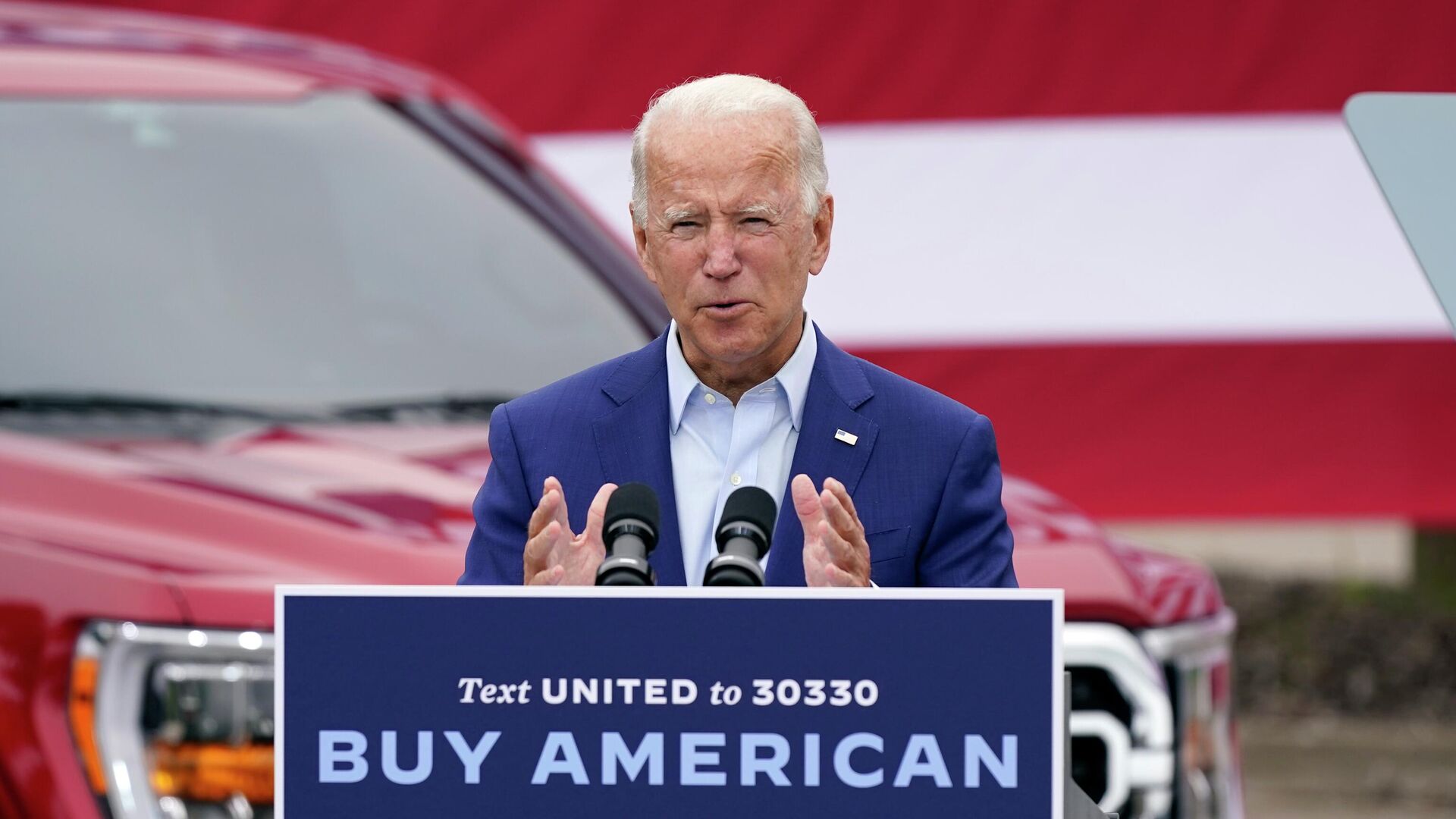https://sputnikglobe.com/20230203/biden-gets-unexpected-win-as-jobs-report-shows-official-us-unemployment-rate-hit-53-year-low-1106963096.html
Biden Gets Unexpected Win as Jobs Report Shows Official US Unemployment Rate Hit 53-Year Low
Biden Gets Unexpected Win as Jobs Report Shows Official US Unemployment Rate Hit 53-Year Low
Sputnik International
The latest report from the US Bureau of Labor Statistics (BLS) shows the US hit its lowest official unemployment rate in more than 50 years. However, the government’s reporting methods conceal a larger long-term unemployment issue.
2023-02-03T22:16+0000
2023-02-03T22:16+0000
2023-02-03T22:09+0000
americas
unemployment
us
inflation
us jobs report
https://cdn1.img.sputnikglobe.com/img/07e6/05/05/1095297177_0:0:3071:1728_1920x0_80_0_0_b4fb4b4a4382fa73c793fa699caada92.jpg
According to the Friday report, the US economy added 517,000 jobs in January 2023, more than twice what was expected by economists. As a result, the unemployment rate fell from 3.6% to 3.4% - the lowest point it’s been since May 1969.Indeed, it was too good to be true. The BLS report also notes that in addition to the 5.7 million unemployed persons in the US, there are another 5.3 million people “not in the labor force who currently want a job.” In other words, the number of unemployed workers is not 5.7 million, but 11 million.The discrepancy exists because of how the Labor Department calculates the size of the labor force. According to the BLS website glossary, workers are excluded from the labor force if they haven’t actively looked for a job in four weeks, even if they want one. That category can include people in several different situations, including those who BLS deems “marginally attached” to the labor force.That said, the BLS noted the number of people not in the labor force who want a job was “little changed” from December 2022, meaning the number of people without a job did in fact decrease. Such a development is uncommon amid high inflation and rising interest rates - a central bank tactic for confronting rising inflation.The good news for US President Joe Biden comes ahead of his State of the Union address next week. The annual speech, given before a joint session of Congress and broadcast to the nation, will see Biden recount his and his party’s victories over the previous year and lay out his policy goals for the coming year.Despite the recent jobs report, economists almost universally expect 2023 and 2024 to be dismal years economically for the US and for much of the globe, with the possibility of recession ever on the horizon.
americas
Sputnik International
feedback@sputniknews.com
+74956456601
MIA „Rossiya Segodnya“
2023
News
en_EN
Sputnik International
feedback@sputniknews.com
+74956456601
MIA „Rossiya Segodnya“
Sputnik International
feedback@sputniknews.com
+74956456601
MIA „Rossiya Segodnya“
biden administration, joe biden, unemployment, jobs report
biden administration, joe biden, unemployment, jobs report
Biden Gets Unexpected Win as Jobs Report Shows Official US Unemployment Rate Hit 53-Year Low
The latest report from the US Bureau of Labor Statistics (BLS) shows the US hit its lowest official unemployment rate in more than 50 years. However, the government’s reporting methods conceal a larger long-term unemployment issue.
According to
the Friday report, the US economy added 517,000 jobs in January 2023, more than twice what was expected by economists. As a result, the unemployment rate fell from 3.6% to 3.4% - the lowest point it’s been since May 1969.
“Today’s jobs report is almost too good to be true,” wrote Julia Pollak, chief economist at ZipRecruiter. “Like $20 bills on the sidewalk and free lunches, falling inflation paired with falling unemployment is the stuff of economics fiction.”
Indeed, it was too good to be true. The BLS report also notes that in addition to the 5.7 million unemployed persons in the US, there are another 5.3 million people “not in the labor force who currently want a job.” In other words, the number of unemployed workers is not 5.7 million, but 11 million.
The discrepancy exists because of how the Labor Department calculates the size of the labor force. According to the
BLS website glossary, workers are excluded from the labor force if they haven’t actively looked for a job in four weeks, even if they want one. That category can include people in several different situations, including those who BLS deems “marginally attached” to the labor force.
Other BLS metrics for calculating unemployment take note of these omissions, with the U-6 rate including those not in the labor force who want a job. That rate, found on page 29 of the report, is 6.6%.
That said, the BLS noted the number of people not in the labor force who want a job was “little changed” from December 2022, meaning the number of people without a job did in fact decrease. Such a development is uncommon amid high inflation and rising interest rates - a central bank tactic for confronting rising inflation.
The Federal Reserve on Wednesday
increased interest rates by another 25 base points, its tenth straight increase after deciding last March to tackle the highest inflation in the US in 40 years.
The good news for US President Joe Biden comes ahead of his State of the Union address next week. The annual speech, given before a joint session of Congress and broadcast to the nation, will see Biden recount his and his party’s victories over the previous year and lay out his policy goals for the coming year.
A
Gallup poll published last week found Biden’s approval rating among the US population was just 41% - not far from its low-point of 38% last July.
Despite the recent jobs report, economists almost universally expect 2023 and 2024 to be dismal years economically for the US and for much of the globe, with the
possibility of recession ever on the horizon.


